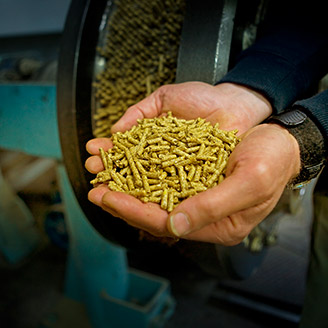
Why Supplementary Feed?
As a management tool, supplementary feeding is used in 3 ways:-
- To fill the nutritional ‘gap’ where pasture cannot satisfy maintenance and/or growth requirements
- To increase pasture utilisation
- To improve and control growth rates and feed conversion
When moving from spring into summer, pasture can go from actively growing (lush leafy) to reproductive and maturing (seed heads, dry and stalky) in a matter of weeks. In this period the quality of the pasture can almost halve. The digestibility* of the pasture can go from 80% to below 50%. (Table 1) This means that the quantity of pasture (Herbage Mass – kg DM/ha) needed to maintain stock can more than treble (x3) (Table 2). In a very short period of time, stock can be actively growing to barely maintaining themselves.


What are the Benefits of Meeting Nutritional Requirements?
Managing and optimising the nutrition of livestock is going to be the next big leap in productivity for the sheep and beef industries:-
- Better quality meat and wool
- Greater flock and herd fertility
- Higher lambing and calving percentages
- Higher marking percentages
- More consistent achievement of market specifications
- Greater profits per hectare
Sources : NSW Department of Agriculture(2006) – Primefact 323- Pasture Assessment & Live Stock Production.
*Digestibility is a useful measure of pasture quality because:-
There is a direct correlation to the energy content of the pasture (see Table 1)
It is positively related to the protein content of the pasture. E.g. when digestibility is high then protein levels will be high.
It is directly related to the rate of digestion of an animal. E.g the higher the digestibility the faster the digestion, which means the animal can eat more, meaning higher levels of production. Pasture with low digestibility travels slowly through the rumen which reduces the animals food intake.